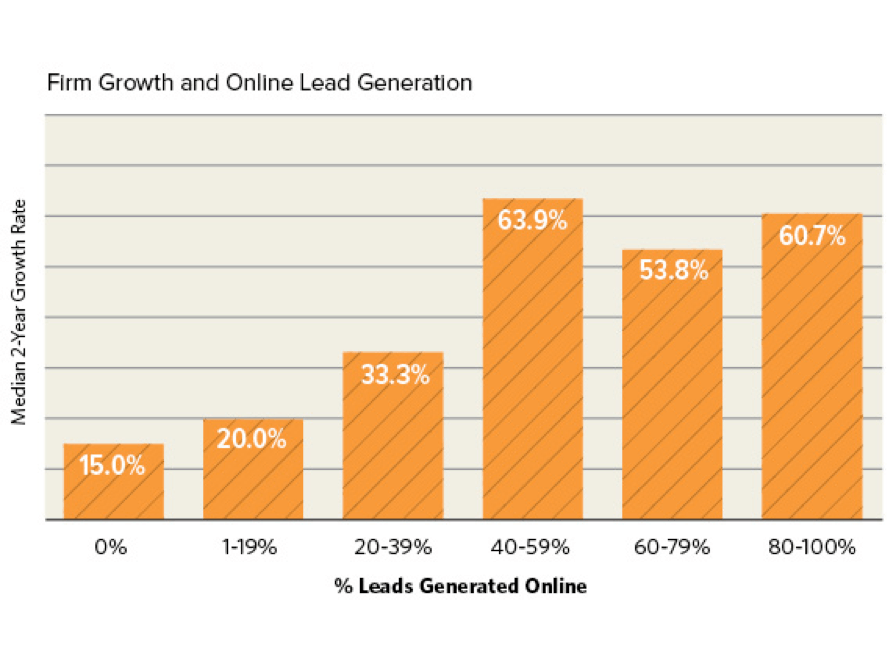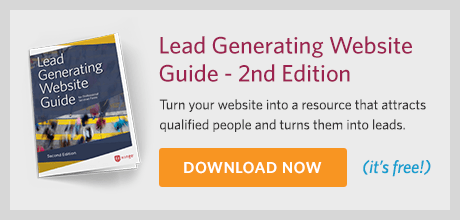How to Run a Successful Lead Generation Campaign

One of the main objectives of running a successful lead generation campaign (and one of the most important) is to do just that, generate leads. The campaign process involves classifying prospective customers and qualifying their probability to buy in advance of making a sales call. The purpose of lead generation can vary from driving sales leads to something like increasing webinar registrations, but in the end they have the same goal and that is to get prospects to raise their hands. Before we go into how to build a successful lead generation campaign, we need to understand a few basic terms.
A lead generating website: As the name implies, lead generating websites are meant to generate and nurture new business leads. There are variations on the types of leads a website might be looking for. For instance, one site may be focused on recruiting where another may be more interested in generating new business teaming partners.
A Customer Relationship Management (CRM) System: CRM systems are intended to collect information on prospects. The information you can gather in a CRM on your contacts can include their website, email, phone number, mailing address, content downloads and open opportunities you may have with them. Your firm can customize your CRM based on the information your firm needs to qualify your leads.
A Content Marketing Strategy: A strategic plan focused on generating and distributing educational content to your target audience on a consistent basis. An end goal of your strategy could be to drive your audience through the content funnel, gaining their trust, having them view you as the expert, and then contact you when they are ready to buy.
A Content Calendar: A resource tool that marketing teams can use to plan all content marketing activity for both traditional and online marketing. The benefit of using a content calendar is being able to visualize and strategize how your content is distributed.
Basic Terms of a Lead Generation Campaign
Lead: A prospect that has some level of potential in becoming a client. The individual usually shows interests and provides his/her information to your firm.
Qualified Lead: A prospect that meets all of your firm’s qualifications and criteria necessary to be considered more likely to become a client.
Lead Generation: The initiation of consumer interest or inquiry into products or services of a your firm.
Lead Generation Campaign: The process of capturing and simulating interest in a service or product for the purpose of developing leads. This includes a strategy using a particular media source and an offer to create inbound leads.
Nurturing: Some leads qualify early on, while others may take more time. Many of your leads will need some nurturing through frequent communication until they are ready to be contacted by someone from your business development team.
Hard Offer: This is typically an offer for a service or product that usually requires the prospect to act immediately. Often times these offers are limited to a few people or may have an expiration date.
Soft Offer: This type of offer usually doesn’t require an immediate response. An example of a soft offer is an email newsletter subscription.
Lead Capture: The use of marketing automation systems, allowing marketers to gather contact information from web forms, landing pages and email campaigns.
Landing Pages: A page that a visitor can land at or arrive on in response to clicking on a link or offer.
Download the Lead Generating Website Guide. It’s free!
Building Your Lead Generation Campaign
Imagine this scenario for a moment; you are at home when suddenly you receive a phone call from a local moving company. Earlier that day you filled out a form on their website. You input your name, phone number, zip code and services you are interested in. While on the website you also downloaded a guide on how to get ready for your move. In doing so, this local moving company generated a new lead, and that lead is you. With the information captured, they are now able to contact you with further value and information. That is how the lead generation process takes place.
The process begins with several main components. These components are necessary in order to maximize the number of qualified leads that you receive. Below are a few components to consider:
Generating Leads Through a Successful Plan
By understanding the basic terms and having all of the components that make up an online lead generation campaign, you can then start to develop your plan by going through these 5 steps. It’s important to know that your process will vary depending on your objective, target audience and use of media.
1. Set your campaign objective: Your objective can vary based on the outcome that you want to achieve. You may want to start off by defining your goal by either the number of leads expected or revenue per lead. These are just a few examples of what your campaign objective could possibly be. In order to better define your objective you may want to ask yourself the following questions:
- Who is your target audience?
- How will you reach them?
- What do you want them to do?
- What call to action do you want to offer them?
- What are you going to offer them?
- How will you follow-up?
- When will you will follow-up?
- Who will follow-up?
- What will you do or what will you ask when you follow-up?
- How will you record and report on the results of the lead?
- Who will you report these results to?
- When will you evaluate your lead generation efforts?
- What will you consider a success?
2. Evaluate and select your campaign target: This may come from your current list of contacts that you have or you may want to focus on an entirely new target group for your lead generation campaign. Either way, make sure you have identified who those groups are and what their pain points and issues might be that your firm can answer with content.
3. Determine your media outlet: While there are may different media outlets ranging from email marketing to eBooks and guides, our research has shown that firms generating more than 60% of their leads online are 2x more profitable than their competitors. Therefore, choosing an email campaign or holding a webinar would be an example of a great strategy for generating more online leads

4. Develop an offer: To reiterate, a lead is a prospective client who has peaked interested in your firm’s product or service. In order to identify these prospects in your list of contacts, you may want to send out an offer. This could be a free download to a guide, registration for a free webinar, etc. When the lead responds to your offer, their information is captured. They are then pulled into your lead generation campaign where you will continue to nurture your leads until they are ready to close a deal.
There are several main mechanics to creating an offer. First you must create a landing page where a prospect lands for a distinct purpose. This is usually prompted by an offer and a call-to-action in which the prospect is prompted to fill out a form. Your hard or soft offer respondents become, as what we at Hinge like to call, a “new hot lead.” There are several different places you can promote these offers such as on a blog, on a webpage, on social media, in an email…these are just to name a few.
5. Create a communications strategy process: This includes what your follow-up process is going to look like. Strategizing how you will respond to your leads, what kinds of material will you share, who will contact them, and finally defining what your proposals will look like as well.
Looking at all the elements of a successful lead generation campaign can make your head spin a bit. So in conclusion, make sure your campaign includes a clear understanding of your target market, multiple media channels to capture and narrow down your leads, compelling offers, and a strong strategy that tracks performance. If you have all of these then you are good to go!

Additional Resources
- Learn about the most effective online marketing strategies to generate leads in our Online Marketing for Professional Services
- Download a free copy of our SEO Guide for Professional Services to create an SEO plan to make your firm easily found online.
- Our Lead Generating Website Guide details how your firm can generate qualified leads with its website.
How Hinge Can Help
Hinge has developed a comprehensive plan, The Visible Firm® to address these issues and more. It is the leading marketing program for delivering greater visibility, growth, and profits. This customized program will identify the most practical offline and online marketing tools your firm will need to gain new clients and reach new heights.
Industries & Topics
Most Popular
- Business Development Strategy: A High-Growth Approach
- A 10 Step Brand Development Strategy for Your Professional Services Firm
- Strategic Marketing for Professional Services
- Digital Branding for Professional Services
- 10 Essential B2B Marketing Strategies to Grow Your Professional Services Firm
- Digital Marketing Strategy for Professional Services
- Rebranding Strategies: A Step-By-Step Approach for Professional Services
- Elements of a Successful Brand 1: Brand Positioning
- The Top 5 Business Challenges for Accounting & Financial Services Firms
- Find Your Differentiator: 21 Ways to Gain a Competitive Advantage for Your Firm
- Elements of a Successful Brand 4: Brand Promise
- What Is the Cost of Video Production for the Web?






Thanks Karl. Really appreciate your advice. The questions that you have mentioned in setting objective part are really what determines the fundamentals of your lead gen approach. Great content!
Cheers!
Thanks for your valuable information
Thanks for this amazing content